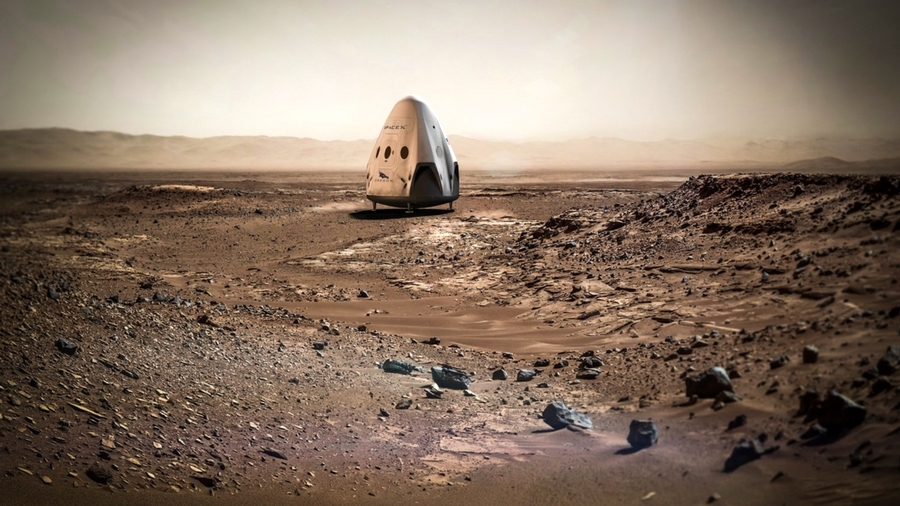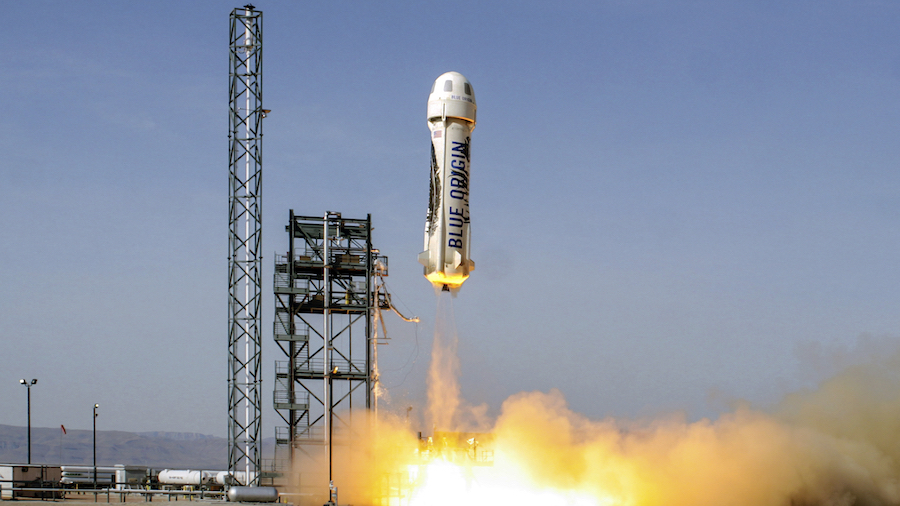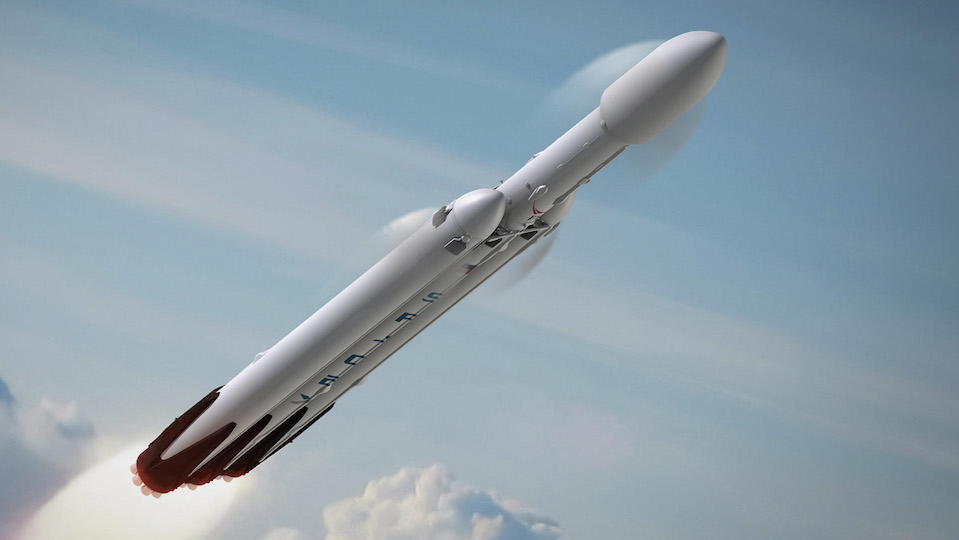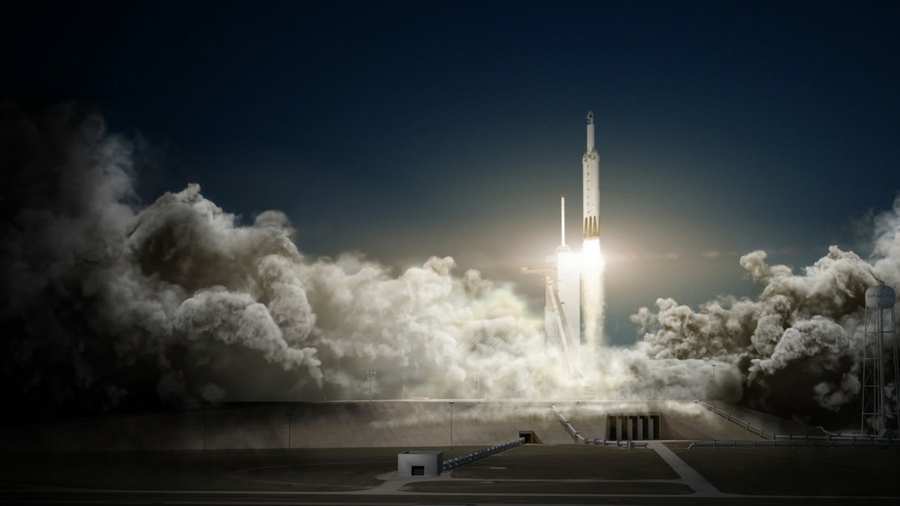Buzz Aldrin on how, why and when you will 'get your ass to Mars'
Human 'Martians' on the Red Planet by 2040, anyone?

The new space race is on. "We can establish permanent habitats on Mars by 2039, and I have a plan to achieve it."
So says Dr. Buzz Aldrin, best known for being one of the first two humans to walk on the Moon when, on 16 July, 1969, he spent two-and-a-half hours on the lunar surface with Neil Armstrong. Three years previously in another huge tech landmark Aldrin took the first space selfie.
Aware that a manned mission to Mars is now right at the top of the tech agenda – thanks in part to the ambitious plans from Elon Musk and Jeff Bezos (and even the United Arab Emirates) – Aldrin is less concerned with who will be the first to Mars, and more with making us stay put on the red planet. 'Flags and footprints' is how he refers to the Apollo missions now, and he's desperate for the same thing not to happen to a manned mission to Mars.

Mars: why go, why stay?
Before we get in to the detail, it's worth remembering just why we need to go to Mars. While Elon Musk thinks Earth will suffer an extinction-level event and Jeff Bezos hates that idea but thinks we'll need to go looking for more sources of energy, Aldrin's take is far more simple.
"We explore or we expire," says Aldrin about why humanity needs to reach for Mars. "We have been stuck in low earth orbit for too long and I believe that we need to break this malaise."
OK, but why do we need to establish a permanent settlement?
"Any expeditionary missions may go there once or twice and never go back," says Aldrin, who has a plan to affordably send multiple spacecraft to Mars.
Sign up for breaking news, reviews, opinion, top tech deals, and more.
"It is vastly more expensive to send people up there with all their infrastructure in one spacecraft, and the quality of the science would be dramatically lower," he says.
"Once you have the right kind of surface and transportation infrastructure the cost of sending individual astronauts up there is much lower."

Aldrin's plan
Aldrin's concept to create a permanent human settlement on Mars revolves around the concept of what he calls Cycling Pathways.
"I believe we can have one or two Earth-Mars 'Cyclers' taking astronauts to Mars on a three-month trip every two or four years," he explains. They can only travel when the two planets align favorably, which happens every 26 months.
"Crews will be transported to the Earth-Mars Cycler with a single launch, with refuelling in Earth orbit." He reckons that his plan will mean the cost of sending an astronaut to Mars will be an order of magnitude cheaper than the expeditionary architectures often discussed by NASA.
Instead of a costly and pointless one-off mission, Aldrin favors developing deep space cruisers that continuously cycle first between Earth and the Moon, then between Earth and Mars, to constantly move people, equipment and supplies. The end result? A 'triad of worlds' in the inner-Solar System supporting people and trade.

Creating Martians
Technicals aside, Aldrin is obsessed with one type of futuristic human; Martians. He's dedicated much effort to his non-profit ShareSpace Foundation, which raises money to drive education and help develop the next generation of space innovators who will lead humanity to future habitation of Mars. He's funding his current project – producing Giant Mars Maps (25x25ft vinyls with the location of every lander marked upon it) to take around schools – by hosting a star-studded Apollo 11 Gala each year at Kennedy Space Center. He calls it his 'red carpet for the red planet’. Held last month, he even got Jeff Bezos and Michael Collins, his command module pilot on Apollo 11, to turn-up for a chat.

Mars and mentality
So what kind of people should go to Mars? "That’s a really important question and I do not think we really have the answer yet but I can tell you that psychological aspects and mental health will be incredibly important," says Aldrin, though he stresses the need for potential Martians to be versatile.
"They will need to be scientists, engineers, physicians, carpenters, plumbers and many other things all rolled in to one," he says.
"The truth is, for long duration missions – certainly to Mars – we will probably be much better off with some diversity in the crew composition."
Is that because of the necessarily cramped conditions?
"Most concepts have spacecraft that are considerably larger than some of the capsules you see today," says Aldrin. "In my concept we would have at least one module that would be considerably larger than one of the ISS modules, so I think that confinement will not be a problem during transit."
Aldrin thinks the bigger problem will be the surface habitation systems.
"In my concept we would pre-deploy several habitat systems derived from the in-space habitation systems," he says.
"These modules would be arrayed in a hexahedron configuration allowing up to six separate connections, so there would be lots of opportunity for expansion."

Venus first
He's obsessed with Mars, but for Aldrin, a manned mission there means first visiting the planet Venus. It gets a bad rap from potential colonizers because of its super-hot, thick atmosphere and sulphuric acid rain, but a manned flyby could prove pivotal on the path to Mars.
"A Venus flyby mission is a relatively straightforward and low-cost means of testing out the deep space performance and operation of the spacecraft without committing to go all the way to Mars," says Aldrin.
"There is also the accomplishment of flying by another planet in our solar system." Aldrin thinks that if men are going to Mars, then it should be women who go to Venus.
"I have been telling people that this mission should be conducted by an all-female crew, but that is really more for the entertainment value," he says.
Such a test of the Cycler would have to be done very precisely. Since Venus orbits the Sun ever 225 days, spacecraft can only be launched there from Earth during a window that lasts just a few days every 19 months. Elon Musk recently described Venus as like a 'hot acid bath' and 'not at all like the goddess' as a simple answer to the question 'why Mars?'

Space tourism and Moon bases
Billionaires and Mars go together well, but not just Musk and Bezos. If reusable rockets are to change the economics of space exploration, SpaceX, Blue Origin and others will all need to make low-Earth orbit into an marketplace.
"I think human commercial activities in low-Earth orbit (LEO) will be very important in the future. Tourism will be among those activities," says Aldrin, though he thinks that manufacturing and research will be more significant fundraisers than space tourism.
"Human commercial activities in LEO, and on the Moon, promise to considerably lower the cost of the ultimate journeys to Mars," he says. "A significant portion of the investment in commercial human spaceflight will benefit Mars missions."

Elon Musk's plans
If Aldrin has penciled-in 2039 and NASA is talking about the 2030s, then there's a chance that the first Mars colonizer will be Elon Musk. The SpaceX supremo has recently issued a paper outlining plans to use reusable rockets to launch cargo, propellant tankers and people into orbit to create a 1,000 spacecraft-strong Mars Colonial fleet that would leave for the red planet every 26 months. Tickets to Mars would cost US$200,000. With 100-200 on each flight, he thinks he can put a million people on Mars in 40-100 years.
"Elon’s plans for Mars are certainly ambitious, and I am delighted that he has many people talking about large numbers of people living their lives on Mars," says Aldrin.
"He has really driven the conversation away from just expeditionary missions." However, Aldrin is not convinced by the details, particularly in the wake of a Purdue team of students reviewing the plans and telling Aldrin that Musk's plan is not feasible. "I think he is reaching well beyond our grasp in the foreseeable future," says Aldrin.

Buzz on Bezos
Not that Musk will be put-off; SpaceX has confirmed that it will test-launch its huge Falcon Heavy rocket in November, a vehicle designed with a manned mission to Mars in mind. Fellow billionaire Jeff Bezos also has plans that have caught the attention of Aldrin.
Blue Origin, his semi-secretive rocket company, is building ever-larger reusable rockets near Kennedy Space Center, and recently outlined plans for a Blue Moon cargo-delivery service to the surface of the Moon. "Jeff Bezos told me on my recent visit to Blue Origin that he's been dreaming of space since the age of five years old," says Aldrin.
"He watched Neil, Mike and I journey to the moon during Apollo 11 in 1969 … he's been quietly breaking barriers with Blue Origin, but it can't do it so quietly any more." Bezos was at Aldrin's Apollo 11 Gala to talk-up colonising not just Mars, but the entire solar system.

Presidential pledge
Aldrin's chosen target to land on the red planet is 2039, which just so happens to be the 50th anniversary of Apollo 11's Moon landing. He thinks that would be the perfect time for the US to make the decision to colonize Mars.
"I am personally very committed to the idea that the President should, and indeed must, announce a major US commitment to Mars permanence by the 50th anniversary," says Aldrin.
"I believe that a Presidential commitment is essential to force us to make the hard choices we must make in order to get to Mars in the next 20 years." Although Aldrin was present at the signing of the reestablishment of the National Space Council by President Trump in June, he doesn't expect it to fundamentally change the US Space Program.
However, if Mars is on the table, things would change.
"The Space Council will really become critical if the administration decides to fundamentally rethink major aspects of our civil and national space programs," he says.

Lunar legacy
Aldrin knows that when a human does set foot on Mars, his own ground-breaking achievement will have been surpassed. However, he knows what he wants his legacy to be, and it's got nothing to do with the Moon.
"I want to be remembered as the man who led the world to Mars, for a permanent settlement," he says.
"I have been a very very lucky person and I'm trying to make the most of it," he says, but at 87 years old, this old astronaut is getting impatient.
That's why he wears a t-shirt with a blunt message: Get Your Ass To Mars.

Jamie is a freelance tech, travel and space journalist based in the UK. He’s been writing regularly for Techradar since it was launched in 2008 and also writes regularly for Forbes, The Telegraph, the South China Morning Post, Sky & Telescope and the Sky At Night magazine as well as other Future titles T3, Digital Camera World, All About Space and Space.com. He also edits two of his own websites, TravGear.com and WhenIsTheNextEclipse.com that reflect his obsession with travel gear and solar eclipse travel. He is the author of A Stargazing Program For Beginners (Springer, 2015),